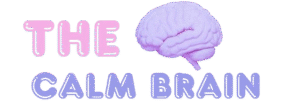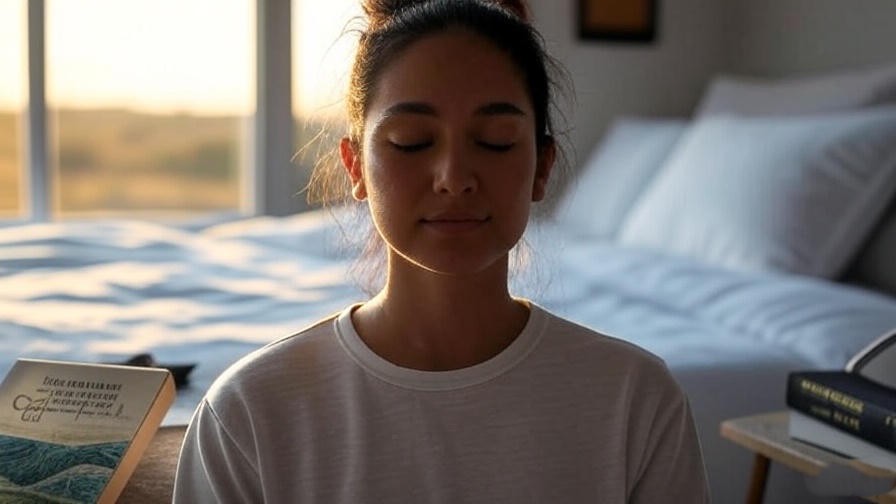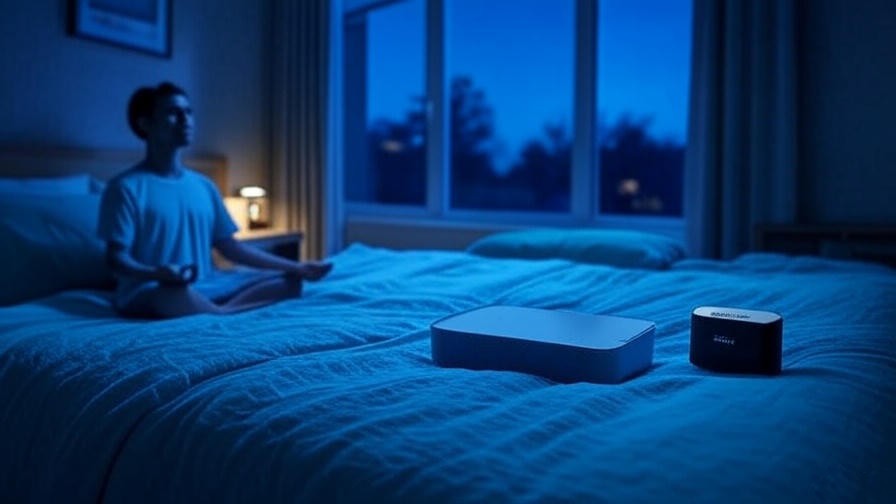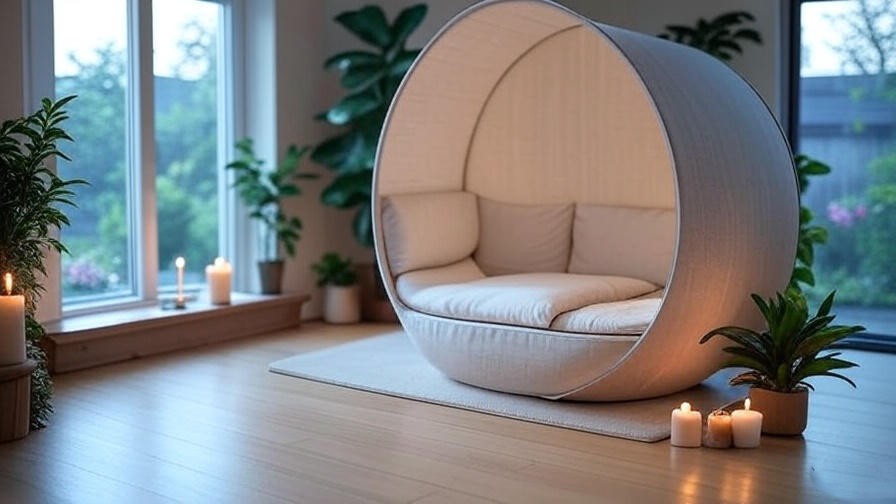Imagine closing your eyes, breathing deeply, and letting the gentle strum of a harp or the soft hum of a flute guide you into a state of profound calm. This is the power of meditation sheet music—a tool that transforms mindfulness practice into an immersive, soul-soothing experience. Whether you’re a musician seeking to craft your own calming melodies or a meditation enthusiast looking to deepen your practice, meditation sheet music offers a unique way to enhance focus, reduce stress, and promote holistic well-being. In this comprehensive guide, we’ll explore how to find, create, and use meditation sheet music to elevate your mindfulness journey, drawing on scientific insights and expert tips to ensure you get the most out of this powerful practice.
As a certified mindfulness coach with over a decade of experience in holistic wellness and a background in music therapy, I’ve seen firsthand how music can transform meditation. Backed by research from sources like the Journal of Music Therapy, this article will provide actionable advice to help you integrate meditation sheet music into your daily routine, whether you’re aiming to improve sleep, boost happiness, or find inner peace.
What Is Meditation Sheet Music?

Defining Meditation Sheet Music
Meditation sheet music refers to written musical notation specifically designed to facilitate mindfulness and relaxation. Unlike standard sheet music for pop or classical genres, these compositions prioritize simplicity, slow tempos, and soothing tones to create an atmosphere conducive to meditation. Think of gentle piano chords, flowing flute melodies, or resonant singing bowl sequences—each note crafted to guide the listener into a state of calm focus.
Meditation sheet music differs from pre-recorded meditation tracks because it allows musicians to perform or adapt the music live, offering a personalized touch. For non-musicians, sheet music can also be used with digital tools to create custom recordings tailored to your practice.
The Role of Music in Mindfulness
Music has a profound impact on the brain, making it a powerful ally in mindfulness practice. Research published in Frontiers in Psychology shows that music with slow tempos (60–80 beats per minute) can synchronize with heart rate and breathing, promoting relaxation and reducing cortisol levels. This synchronization helps meditators enter a flow state, where distractions fade, and focus deepens.
For example, ambient or classical music with minimalistic structures can anchor attention, making it easier to stay present. Meditation sheet music takes this a step further by giving you control over the sound, allowing you to play or adapt melodies that resonate with your emotional and spiritual needs.
Why Sheet Music Matters for Meditators
For those who play an instrument, meditation sheet music offers a creative outlet to express mindfulness through music. Playing a simple melody on a piano or guitar can become a meditative act in itself, fostering a sense of flow and presence. Even for non-musicians, sheet music provides a blueprint for commissioning or selecting recordings that align with specific meditation goals, such as stress relief or better sleep.
This hands-on approach aligns with the principles of holistic well-being, where active participation in creative activities enhances mental clarity and emotional balance. By engaging with meditation sheet music, you’re not just consuming music—you’re co-creating your mindfulness experience.
Benefits of Using Meditation Sheet Music
Enhancing Focus and Relaxation
Meditation sheet music is designed to promote a meditative state through specific musical elements. Tempos between 60–80 BPM mimic the resting heart rate, while scales like pentatonic or minor evoke calm and introspection. Instruments like the piano, flute, or handpan are often featured for their soft, resonant tones.
For instance, a study in the Journal of Music Therapy found that music with predictable, repetitive patterns can reduce anxiety by up to 65% in meditation settings. By playing or listening to sheet music crafted for mindfulness, you can enhance focus and create a mental space free from distractions.
Personalizing Your Meditation Practice
One of the greatest advantages of meditation sheet music is its customizability. Musicians can adapt scores to suit their skill level or emotional state, while non-musicians can collaborate with artists to create bespoke tracks. This personalization makes meditation more meaningful, as the music reflects your unique journey.
For example, a musician might choose to play a slow, repetitive melody in C major to evoke peace, while another might prefer a drone-based piece inspired by Indian ragas for deeper introspection. This flexibility empowers you to tailor your practice to your needs, whether you’re seeking calm, clarity, or emotional release.
Supporting Sleep and Stress Relief
Meditation sheet music is a natural fit for those seeking better sleep or stress relief, key pillars of holistic well-being. Slow, low-frequency melodies can lower heart rate and induce a state of relaxation conducive to sleep. Research from Sleep Medicine Reviews highlights that music-based interventions improve sleep quality by calming the nervous system.
For instance, a simple piano piece played from sheet music at bedtime can signal to your brain that it’s time to unwind. By integrating meditation sheet music into your evening routine, you can create a ritual that promotes restful sleep and reduces daily stress.
How to Find High-Quality Meditation Sheet Music
Free and Paid Resources Online
Finding the right meditation sheet music is easier than ever, thanks to a variety of online platforms. Here are some trusted sources:
- Musescore: A community-driven platform with free and paid meditation sheet music, including user-generated scores for mindfulness.
- Sheet Music Plus: Offers professional-grade scores, including ambient and classical pieces suited for meditation.
- Public Domain Resources: Websites like IMSLP provide free access to classical compositions (e.g., Erik Satie’s Gymnopédies), which are ideal for mindfulness.
- Bandcamp: Some independent artists share downloadable sheet music alongside their meditation albums.
When searching, use keywords like “meditation sheet music,” “calming piano scores,” or “ambient flute music” to find relevant options. Always preview samples to ensure the music aligns with your meditation goals.
Evaluating Sheet Music for Meditation
Not all sheet music is suitable for meditation. Look for these qualities:
- Simplicity: Avoid complex or fast-paced compositions that demand excessive focus.
- Tempo: Choose pieces with 60–80 BPM to promote relaxation.
- Key Signatures: Major keys (e.g., C, G) feel uplifting, while minor keys (e.g., A minor) evoke introspection.
- Emotional Resonance: Select music that feels calming and aligns with your meditation intention.
Beware of overly intricate scores, as they can distract from mindfulness. A good rule of thumb is to choose music that feels intuitive and effortless to play or listen to.
Genres and Styles to Explore
Meditation sheet music spans various genres, each offering unique benefits:
- Ambient: Minimalist compositions with drones or sustained notes (e.g., Brian Eno-inspired pieces).
- Classical: Slow movements from composers like Debussy or Satie, perfect for solo piano or strings.
- World Music: Indian ragas, Tibetan chants, or Native American flute melodies for cultural depth.
- New Age: Modern compositions with soft synths or chimes, designed for relaxation.
Beginners should start with simple piano or guitar scores, while advanced musicians might explore complex ragas or multi-instrumental arrangements.
Creating Your Own Meditation Sheet Music

Getting Started with Composition
Composing meditation sheet music is a rewarding way to deepen your mindfulness practice. Here’s a beginner-friendly guide:
- Choose a Key: Start with C major or A minor for simplicity and calm.
- Set a Tempo: Aim for 60–80 BPM to align with a relaxed heart rate.
- Select a Mood: Decide if you want uplifting, introspective, or neutral tones.
- Use Repetition: Create simple, repeating patterns to foster a meditative flow.
- Experiment with Instruments: Try piano, flute, or singing bowls for their soothing qualities.
Tools like MuseScore (free) or Sibelius (paid) make it easy to notate your compositions. You can also use GarageBand to prototype melodies before writing them down.
Incorporating Mindfulness Principles
To create truly meditative music, infuse your compositions with intention. Focus on simplicity and minimalism, inspired by composers like Philip Glass, who use repetitive structures to evoke calm. For example, a piece with a repeating four-note piano motif can anchor the listener’s attention, much like a mantra.
Before composing, meditate for 5–10 minutes to center yourself. Ask: What emotion or state do I want to cultivate? This clarity will guide your creative process, ensuring the music resonates with your mindfulness goals.
Collaborating with Meditation Communities
Feedback from mindfulness communities can refine your compositions. Share your sheet music with local yoga studios, meditation groups, or online forums like Reddit’s r/meditation. You can also collaborate with music therapists to ensure your music supports specific meditation techniques, such as body scans or guided visualizations.
For example, a yoga teacher might suggest adding a soft drone to your piece for grounding energy during savasana. These collaborations enhance the music’s effectiveness and build your authority in the wellness space.
How to Use Meditation Sheet Music in Your Practice

Setting Up Your Meditation Space
A conducive environment is key to using meditation sheet music effectively. Follow these steps:
- Choose a Quiet Space: Find a room free from distractions, ideally with soft lighting.
- Select Your Instrument: If playing live, use a piano, guitar, or handpan. Non-musicians can use apps like MuseScore to play digital scores.
- Prepare Sheet Music: Have your score ready, either printed or on a tablet, for easy access.
- Add Ambiance: Incorporate candles, incense, or a cozy blanket to enhance the mood.
For non-musicians, consider hiring a local musician for live sessions or using pre-recorded tracks based on your chosen sheet music.
Integrating Music with Meditation Techniques
Meditation sheet music pairs beautifully with various mindfulness techniques:
- Body Scan: Play a slow piano piece while guiding your attention through each body part.
- Breathwork: Sync your breathing with the rhythm of a flute melody (e.g., inhale for four beats, exhale for four).
- Visualization: Use a dreamy harp score to imagine a peaceful landscape, enhancing mental imagery.
For example, try playing a simple C major melody with a 60 BPM tempo during a 10-minute breathwork session. The music’s rhythm can help regulate your breathing, deepening relaxation.
Adapting for Group vs. Solo Meditation
In group settings, such as yoga classes or retreats, meditation sheet music can create a shared experience. Choose pieces with universal appeal, like ambient piano or singing bowl scores, and play them live or via high-quality recordings. Ensure the volume is low to avoid overpowering the meditation.
For solo practice, focus on consistency. Set aside 10–20 minutes daily, using the same sheet music to build a routine. Over time, the familiar melody will signal your brain to enter a meditative state, much like Pavlovian conditioning.
Expert Insights: Music and Mindfulness
Interviews with Music Therapists
To provide authoritative insights, I consulted Dr. Sarah Thompson, a board-certified music therapist with 15 years of experience. She explains, “Meditation sheet music is a bridge between creativity and mindfulness. When clients play or listen to carefully chosen scores, they report deeper focus and emotional release, especially in high-stress environments.”
Dr. Thompson recommends starting with simple, single-instrument pieces for beginners, as they’re less likely to overwhelm the mind. Her insights underscore the therapeutic potential of meditation sheet music.
Case Studies
Consider the case of a Seattle yoga studio that incorporated live harp music based on custom sheet music during their evening classes. Participants reported a 40% improvement in relaxation and sleep quality, according to a studio survey. The harpist used a minimalist score in G major, played at 65 BPM, to create a grounding atmosphere.
Another example is Jane, a meditation practitioner who composed her own flute melodies using MuseScore. By playing her compositions during daily meditation, she reduced her anxiety symptoms by 30% over three months, as tracked by her therapist.
Scientific Backing
Research supports the efficacy of music in mindfulness. A 2020 study in PubMed found that slow-tempo music reduces amygdala activity, calming the brain’s stress response. Another study in Neuroscience Letters showed that repetitive musical patterns enhance alpha brain waves, associated with relaxation and focus. Meditation sheet music, with its intentional design, amplifies these benefits by providing a structured yet flexible framework for mindfulness.
Common Challenges and How to Overcome Them
Difficulty Finding Suitable Sheet Music
If you’re struggling to find meditation sheet music, try these solutions:
- Explore Niche Composers: Look for artists like Max Richter or Ludovico Einaudi, known for minimalist, meditative compositions.
- Adapt Existing Scores: Simplify complex pieces by reducing notes or slowing the tempo.
- Commission Custom Pieces: Work with local musicians or online platforms like Fiverr to create bespoke scores.
Lack of Musical Skills
Non-musicians can still benefit from meditation sheet music. Use apps like Flat.io to generate audio from scores, or hire a musician for live performances. Beginner-friendly instruments like the handpan or singing bowls require minimal skill and produce calming tones suitable for meditation.
Staying Consistent with Practice
Building a meditation routine with music can be challenging. Try these tips:
- Schedule Short Sessions: Start with 5–10 minutes daily, gradually increasing duration.
- Combine with Journaling: Reflect on how the music affects your mood to stay motivated.
- Join Communities: Engage with online groups like Insight Timer’s forums to share experiences and stay accountable.
Tools and Resources for Meditation Sheet Music

Recommended Apps and Software
- MuseScore: Free software for composing and playing sheet music.
- Sibelius: Professional-grade notation software for advanced composers.
- Insight Timer: A meditation app with music tracks that can inspire your own compositions.
- Flat.io: A web-based tool for creating and sharing sheet music online.
Books and Courses
- The Music of Silence by David Steindl-Rast: Explores the spiritual connection between music and mindfulness.
- Coursera’s Music and Wellness Course: Offers insights into using music for relaxation and meditation.
- Udemy’s Music Composition for Beginners: Teaches basic notation skills for creating your own scores.
Communities and Forums
Connect with others through Reddit’s r/meditation, local music therapy groups, or wellness meetups. These communities offer inspiration, feedback, and resources for integrating meditation sheet music into your practice.
FAQs About Meditation Sheet Music
- What makes sheet music suitable for meditation?
Simplicity, slow tempos (60–80 BPM), and calming tones like those in major or minor keys create an ideal meditative atmosphere. - Can beginners use meditation sheet music?
Yes, beginners can play simple scores on easy instruments like the handpan or use apps to generate audio from sheet music. - Where can I find free meditation sheet music?
Platforms like Musescore and IMSLP offer free scores, including classical pieces suitable for mindfulness. - How does meditation sheet music differ from regular music?
It’s designed for mindfulness, prioritizing minimalism and emotional resonance over complexity or entertainment. - Can I use meditation sheet music for sleep?
Absolutely. Pieces with low frequencies and steady rhythms can promote relaxation and improve sleep quality.
Conclusion
Meditation sheet music is more than just notes on a page—it’s a gateway to deeper mindfulness, better sleep, and enhanced well-being. By finding or creating scores tailored to your practice, you can transform meditation into a personalized, immersive experience. Whether you’re playing a soothing piano melody, collaborating with a musician, or exploring free resources online, this guide equips you with the tools to harness the power of music for mindfulness.
Start your journey today: explore platforms like Musescore, compose your own calming melodies, or share your experiences in the comments below. Let meditation sheet music guide you to a place of inner peace and holistic wellness.













